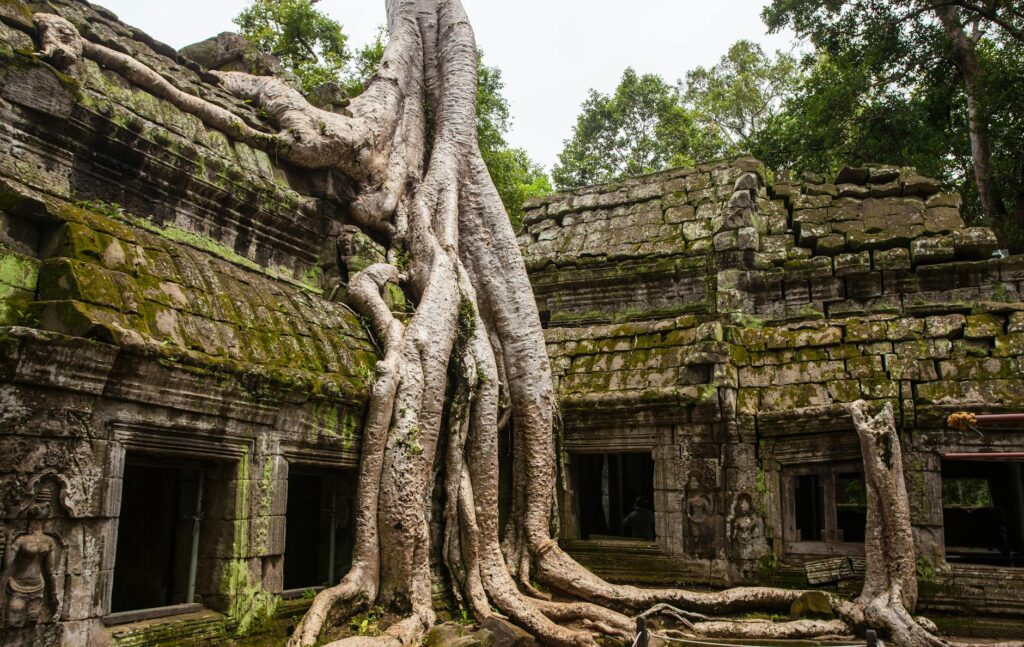Angkor Wat, the magnificent temple complex in Cambodia, stands as a testament to the Khmer Empire’s power and artistry. Its towering spires and intricate carvings beckon visitors from around the globe to explore its rich history and breathtaking beauty. This blog post will delve into the captivating world of Angkor Wat, uncovering its secrets and leaving you yearning for a visit.
A Brief History
Construction of Angkor Wat began in the early 12th century under the reign of King Suryavarman II. Originally a Hindu temple dedicated to the god Vishnu, it later transitioned into a Buddhist place of worship. The temple’s construction spanned decades, employing thousands of skilled artisans and workers.  Learning more about the Khmer Empire provides crucial context for understanding the temple’s significance.
Learning more about the Khmer Empire provides crucial context for understanding the temple’s significance.
Architectural Marvel
Angkor Wat’s architecture is truly awe-inspiring. Its five central towers symbolize the mythical Mount Meru, the home of the gods in Hindu cosmology. The temple’s layout is incredibly complex, with intricate bas-reliefs depicting scenes from Hindu mythology and epic tales.  The precision and scale of the construction remain a marvel of engineering, even by today’s standards. Explore the temple’s layout in more detail to truly appreciate its complexity.
The precision and scale of the construction remain a marvel of engineering, even by today’s standards. Explore the temple’s layout in more detail to truly appreciate its complexity.
Intricate Carvings and Reliefs
The walls of Angkor Wat are adorned with thousands of square meters of incredibly detailed bas-reliefs. These carvings depict scenes from the epic poem, the Ramayana, as well as scenes of daily life in the Khmer Empire. [IMAGE_3_HERE] The level of detail is astonishing, offering a glimpse into the artistic skills and cultural beliefs of the time. You can find more information on the official Angkor Wat website for high-resolution images.
A Spiritual Journey
Beyond its historical and architectural significance, Angkor Wat holds deep spiritual meaning for many. For centuries, it has served as a place of pilgrimage and meditation. Even today, the atmosphere within the temple is one of serenity and reflection. The complex is truly magnificent, and you can find a helpful travel guide here. The feeling of peace and tranquility is palpable and well worth experiencing.
Visiting Angkor Wat
Planning a trip to Angkor Wat requires some preparation. The best time to visit is during the dry season (November to April). Remember to wear comfortable shoes, bring sunscreen, and stay hydrated. Consider hiring a local guide to gain a deeper understanding of the temple’s history and significance. Booking your tour through a reputable agency like this one ensures a smooth experience. [IMAGE_4_HERE] Remember to respect the site and its religious significance during your visit. Consider the best time to visit Angkor Wat for your ideal trip.
Angkor Wat stands as a timeless testament to human ingenuity and spiritual devotion. Its beauty and mystery continue to captivate visitors from around the world, offering a unique and unforgettable experience. From its intricate carvings to its spiritual aura, Angkor Wat leaves an indelible mark on all who visit.
Frequently Asked Questions
What is the best time to visit Angkor Wat? The best time to visit is during the dry season, from November to April, when the weather is pleasant and the humidity is lower.
How much time should I allocate for visiting Angkor Wat? At least a full day is recommended to explore the main temple complex thoroughly. However, many visitors spend multiple days exploring Angkor Wat and the surrounding temples.
Are there any guided tours available? Yes, many guided tours are available, ranging from short walking tours to multi-day excursions that cover various temples within the Angkor Archaeological Park. Hiring a local guide can greatly enhance your experience.
What should I wear to visit Angkor Wat? Dress respectfully. Shoulders and knees should be covered. Comfortable shoes are essential due to the extensive walking involved.
What is the cost of entry? The cost of entry varies depending on the length of your stay. It’s best to check the official website for the most up-to-date pricing information.

